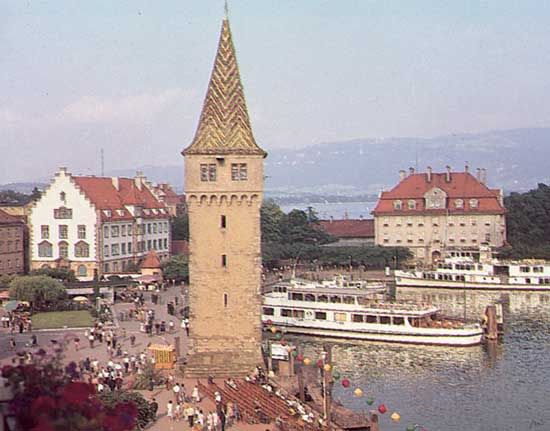Lindau
Lindau, city, Bavaria Land (state), extreme southern Germany. It lies on an island in Lake Constance (Bodensee), connected to the mainland by two bridges, southeast of Friedrichshafen. It was the site of a Roman camp, Tiberii, and of a Benedictine abbey founded in 810. Fortified in the 12th century, it became a free imperial city in 1275 and was a prosperous merchant town along the trade route from Italy. The abbey was an ecclesiastical principality of the Holy Roman Empire from 1466 until it was secularized in 1802. Lindau was ruled by Austria in 1804 and passed to Bavaria in 1805. The communities of the “Garden City” on the lake’s northern shore were incorporated with Lindau in 1922. A renowned summer resort and tourist centre, Lindau is also a customs station. It retains a medieval and Baroque appearance. Among notable landmarks are the old town hall (1422–36; remodeled 1578), the collegiate church of the old abbey (1751), St. Stephen’s Church (1180), and the 19th-century Bavarian lion statue at the entrance to the small harbour. There is a lake steamer service to Austria and Switzerland. Pop. (2003 est.) 24,348.











